Solid Listening
Last year I went to Redcliffe Caves: a labyrinth of tunnels under the city by the Bristol Docks, and Charlotte Heffernan, a fellow student, and I put geophones in the walls of the underground caves to listen to the sound that could be heard. We couldn’t hear very much: mostly very faint traffic sounds and electrical buzzes. We did hear muffled signs of life above our heads. We were directly under streets and houses and a pub.
( http://www.bristoltours.com/Redcliffe.htm )
When we drove away we noticed people in the pub drinking. We thought of the direction of the tunnels and realized that they had made those faint sounds – the ones heard underground. They reminded me of the muffled sounds you hear through walls and doors and even from under the bath water when you are a child.
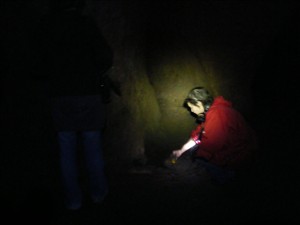
‘The faint underground sounds seemed somehow amplified and more potent in their remoteness deep down in the quiet underground.’ Words from journal 2010
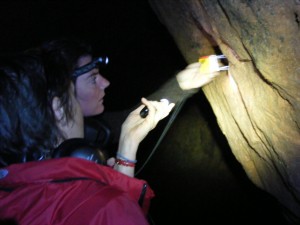
I made an installation for the sound festival Audiograft (http://www.audiograft.com/ ) after thinking about these small sounds heard remotely through the big chunk of rock and clay. Through Walls was a sound piece where people inside a room could hear sounds through the walls or through the glass window. They could press their ears on the walls or the glass window, or use a listening device like a tumbler, funnel, horn, stethoscope etc.
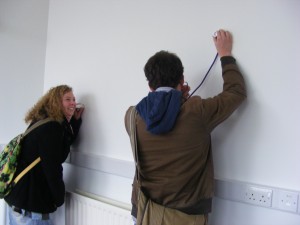
Speakers played sound into the walls. It was a track of random domestic sound I had picked up in my house. These sounds were hardly audible in the room but heard if you put your ear or a listening device to locate them. The walls and plate glass surfaces acted both as amplifier and filter to the sound heard through them.
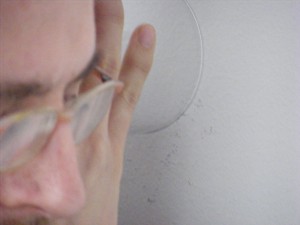
People fed back several points about the sound piece. The instruments became ‘extension to their own ears’. The act of creating new ‘big ears’ started people thinking about what they were listening to and where it was coming from. The instruments transformed the sound they could hear with their ears. The piece showed how extremely efficient our own ears are, and also that we are not aware of the transforming qualities our own ears have, as we are so used to our own hearing.
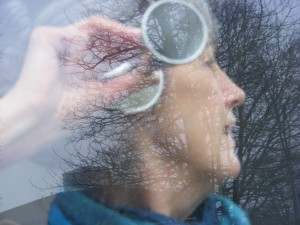
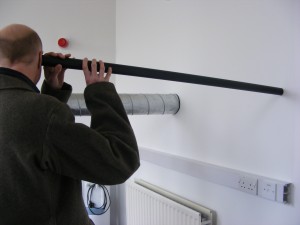
Playing with the ear extensions, allowed people to experiment (making their own ear extensions) and listen to the sounds. The quietness of the sounds required the listeners to focus on the sound level or loudness of the sounds. This reminded me that we make use of understanding differing levels of sound to locate our selves geographically. It also jolted the listeners’ memories of similar sounds heard in the past through materials such as walls, water and glass. We have, it seems, been receiving sound from our earliest memories through all the different materials around us.
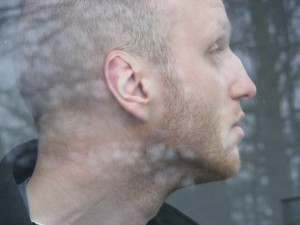
End of post